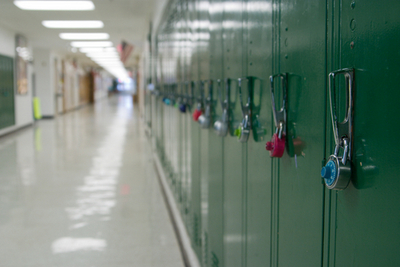 It’s a parent’s worst nightmare – and the type of news that sends a shiver down spines – he/she hears these four piercing words; your child has gone missing. From abductions to runaways, the U.S. Department of Justice reports that almost 800,000 children (younger than 18) go missing in a one-year period, or an average of 2,185 children a day.
It’s a parent’s worst nightmare – and the type of news that sends a shiver down spines – he/she hears these four piercing words; your child has gone missing. From abductions to runaways, the U.S. Department of Justice reports that almost 800,000 children (younger than 18) go missing in a one-year period, or an average of 2,185 children a day.
And in the case of Sierra LaMar’s parents, the nightmare is not yet over. Sierra, a 15-year-old boisterous girl from Morgan Hill, Calif., reportedly never got on her 7:15 a.m. bus to school on March 16. As student after student filtered into Sierra’s classes throughout the day, teachers simply entered “absent” next to Sierra’s name in their computer system. It wasn’t until 6 p.m. that night, more than 12 hours after Sierra had gone missing, that her parents first received word through an automated email and phone call from the school that Sierra never made it to class that day.
"They had no idea of the situation before they got that email," Sierra's older sister Danielle LaMar said of her parents. "Especially in this case, time definitely matters."
After dozens of frantic calls to friends and family to see where Sierra was, the LaMars called the police. Since the initial report, police have received more than 1,200 tips but have few leads and Sierra has still not been found.
While police, volunteers and Sierra’s parents feverishly look for the high schooler, others are asking the tough question that many might be afraid to ask: in an age rife with technology – from text messaging to instant messaging to email to apps – why weren’t Sierra’s parents notified earlier? According to a recent newspaper article, an informal survey of nine school districts around the Bay Area, from Oakland and Concord to San Jose and Morgan Hill, found that most schools wait to notify parents of a child's absence until the end of the day, especially at high schools.
“There's nothing illustrating the flaw in that system more than Sierra's disappearance," said Marc Klaas, whose daughter, Polly, was kidnapped from their home in Petaluma, Calif., and killed in 1994.
Although experts say it is hard to know whether a few extra hours could have made the difference in Sierra being found, statistics show that most kidnappers with insidious intentions kill their victims within three hours.
So all of this raises the question: at what point should school officials be tasked with notifying parents that a child is missing? Especially at the high school level where kids can frequently cut class or skip the whole day, at what point should school administrators suspect that foul play has been involved and notify parents?
It’s a tricky situation as each school environment and the levels of perception are so different.
For example, in high schools with fewer than 100 students a grade, and in those schools where students often have the same teacher for years in a row, one would surmise that it is easier to detect if something has gone wrong. Specifically, teachers might be more in tune to the fact that a solid, dependable student is missing (and that the parents have not called to report the child sick). In these instances, teachers and administrators might not think twice to call the parent after the first period that child is missing.
But most districts around the world are much larger than these types of schools, and in many of these school atmospheres students move from class to class, falling through the cracks if they are not standout pupils. In these schools, teachers might note that a student is missing but not necessarily know if this is something that should worry a teacher or should be addressed later.
As a result of just how different educational institutions are around the world, each school needs to create a notification policy that is in line with their school profile, but every school must consider the following: it is just as important to determine how to use technology for security measures as it is to figure out how to enhance the classroom learning environment. Technology can do so much more than bring kids science lessons in 3D and allow students to experience video conferencing firsthand; it can save their lives.
So what will Sierra’s high school do different after her disappearance. According to Claudia Rossi, an elected trustee for the Morgan Hill Unified School District, the district will look into the issue and explore the possibility of connecting alerts with parents' cell phones and alerting earlier in the day.
"Obviously with this missing case, we're all wondering what can we do better?" Rossi said. Still, "can everything we do safeguard and keep a tragedy like this from happening? Sadly, no."









Leave a comment